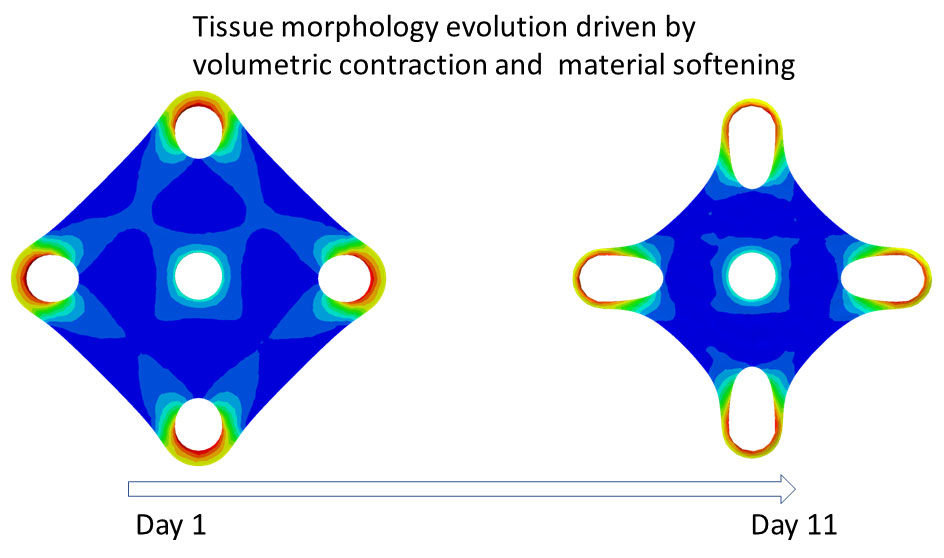News
Expanse Supercomputer Used to Advance Science for Wound Healing
Published August 02, 2022
Kimberly Mann Bruch, SDSC External Relations
Researchers from Syracuse University recently used the Expanse supercomputer at the San Diego Supercomputer Center at UC San Diego to better understand tissue remodeling, or wound healing, during a period of about 10 days. Their study was published in Frontiers in Bioengineering and Biotechnology in an article entitled, Controlling Mesenchyme Tissue Remodeling via Spatial Arrangement of Mechanical Constraints.
“Tissue remodeling plays an important role in tissue repair and homeostasis,” explained Syracuse Associate Professor of Mechanical and Aerospace Engineering Teng Zhang. “Our research can provide insight on better design strategies for wound healing, as well as improved designs for organ-on-a-chip tools [new microengineered systems] that are used for drug discovery.”
This interdisciplinary, collaborative effort between Zhang’s mechanical engineering research team and Associate Professor of Biomedical Zhen Ma's laboratory at Syracuse showcased the important roles of deformation during tissue remodeling.
“Our study shows very promising results by integrating experiments and simulations, which can potentially provide engineering design rationale to create tissues with better stability and longevity,” Ma said. “This is a very important realization for the creation of new tissue implants for regenerative medicine.”

This illustration showing the tissue remodeling process over a 10-day period is based on simulation results using Expanse at SDSC. Credit: T. Zhang
Both Zhang and Ma credit Expanse as playing a critical role in their study.
“Most of my research problems are highly nonlinear and require to be simulated to parallel simulations—Expanse has been a great resource for us to complete these simulations in a reasonable time,” Zhang said. “SDSC not only provided computational resources, but also software and guidance of the installing and updating software—this is very important for us as we are users of various software systems but not very familiar with managing them in a cluster.”
Zhang has been using SDSC resources since 2016 and said that his team mostly developed new functions within existing software, both open-source or commercial ones.
“This provides a very inclusive and supportive environment for researchers like me so that I can focus on the algorithm developments and implementation without taking care of the hardware,” he said. “This is very helpful for me to unravel fundamental science behind a lot of scientific questions.”

